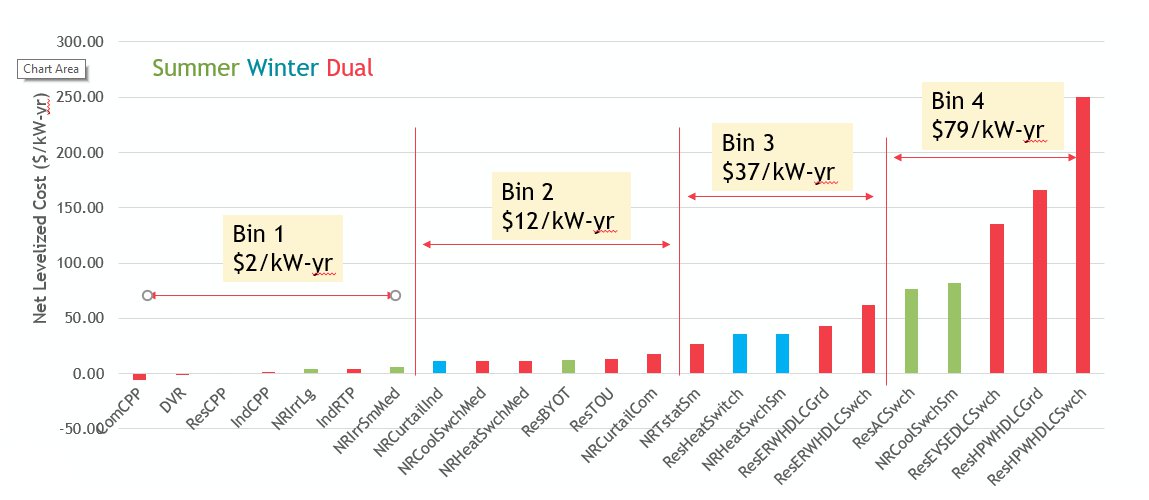For the RPM, DR was modeled similar to a generating resource with both up-front and annual costs and size and total potential of resource (both energy and capacity amounts). The input file is available here. More information on RPM input parameters are available here.
Given the limited number of resources the RPM could analyze, the DR products were collapsed into four bins. At the time of supply curve development, the anticipated priority for DR was to provide reduction during peak events and net levelized cost would be the primary driver. Thus, the four bins were determined based on cost, as illustrated in the following figure.

However, as the plan analysis proceeded, staff learned that the system needs were less about peak adequacy and more about a persistent need to mitigate rapid changes in net load (load net of primarily renewable resources). With this learning came a recognition that some DR could provide value within this system, but not as currently incorporated in the supply curves.
Specifically, the DR products that could provide the most value are those that either have minimal customer impact when deployed and thus could be dispatched frequently or are intended to result in a day-to-day shift in usage pattern (namely TOU). For products that have minimal customer impact and could be dispatched frequently, DVR is a key option. (Another option could be load control of grid-enabled water heaters, but this product is still expensive with current limited applicability and so were not considered in this sensitivity analysis).
To test this sensitivity, staff reconfigured the supply curve bins to:
- Only include DVR and residential TOU in bin 1 – all other previous bin 1 products were moved into bin 2.
- The hours of deployment for DVR and TOU were assumed to be all peak hours of 6pm – 10pm Monday through Saturday, or 288 hours per quarter, except spring when needs are different.
- The dispatch cost was reduced to $0 per megawatt hour for TOU and DVR. The dispatch cost was meant to reflect an economic hurdle to dispatch the product only during times of peak need to minimize customer inconvenience. Given the limited customer impact of DVR and the lack of dispatch for TOU, a zero or negligible dispatch cost is more realistic.



